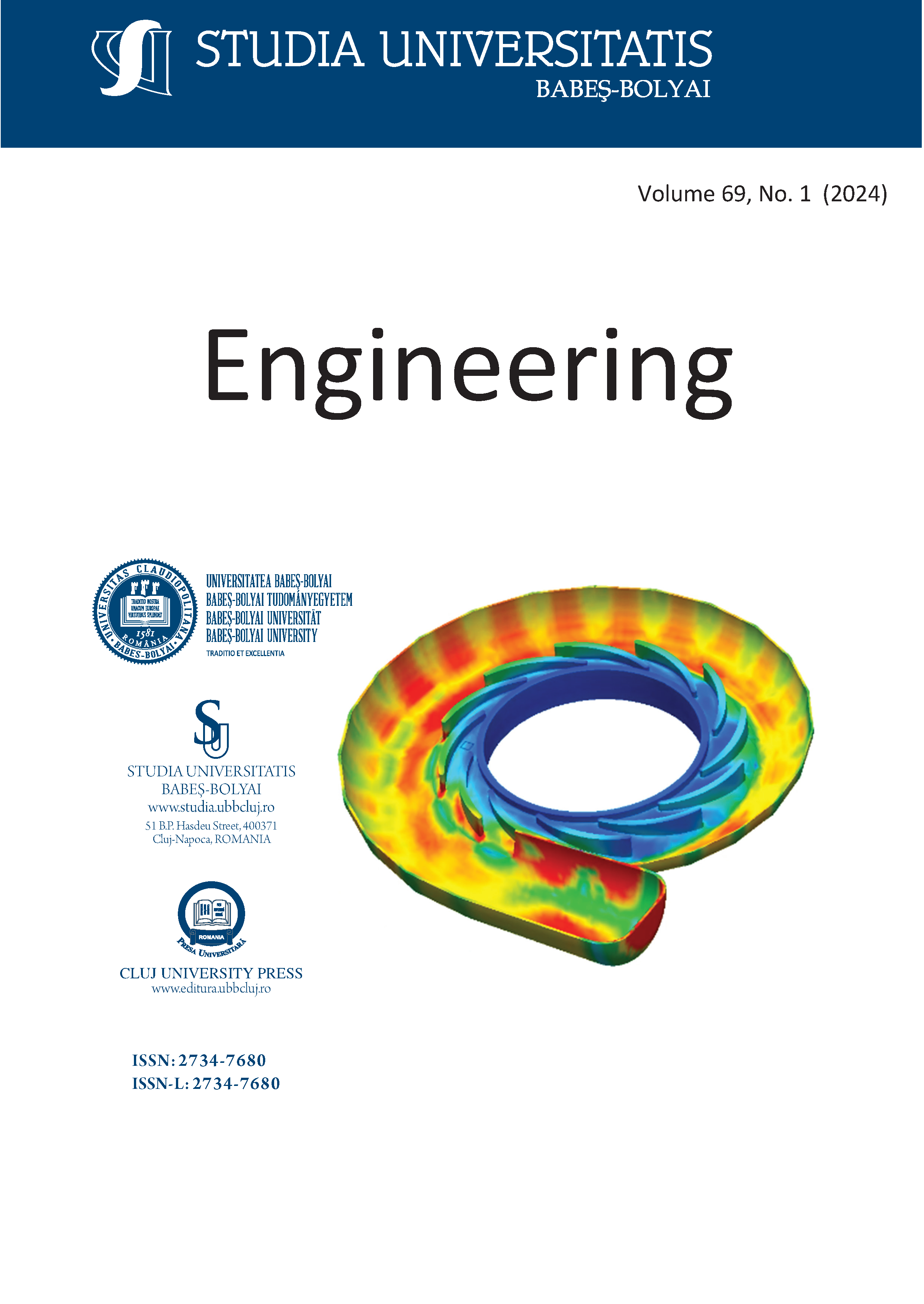Determining the optimum severity of damage using model performance analysis methods
DOI:
https://doi.org/10.24193/subbeng.2024.1.5Keywords:
cantilever beam, frequencies, RMSE, SolidWorks, vibration modesAbstract
In this work, we have considered a cantilever beam with a rectangular plastic cross-section, reinforced by four wire reinforcements made of ductile Iron. It was studied using numerical resolution based on theoretical formulae and then simulated using Solidworks software. A comparison of the results on the frequency ratios between the theoretical and numerical by Solidworks models gave a low error of 1.389% with a high correlation coefficient of around 0.959. Then, two top reinforcements inside the beam were cut in order to study the behavior of the intact beam and the damaged beam. Using the simulation results, we found an accurate damage severity using a mathematical method based on error deviation indicators or Model Performance Analysis (MPA).
References
B. Brejcha, From Origins To Now: The History Of The SolidWorks Saga, Available online: https://design-engine.com/from-origins-to-now-the-history-of-the-solidworks-saga/ (downloaded on 14 September 2024).
D. Planchard, Engineering Design with SOLIDWORKS 2020, SDC Publications, USA, 2019.5
G.R. Gillich, M. Tufoi, Z.I. Korka, E. Stanciu, A. Petrica, The relations between deflection, stored energy and natural frequencies, with application in damage detection, Romanian Journal of Acoustics and Vibration, 13(2), 2016, pp. 87-93.
L.V. Tran, H.A. Ly, J. Lee, M.A. Wahab, H. Nguyen-Xuan, Vibration analysis of cracked FGM plates using higher-order shear deformation theory and extended isogeometric approach, International Journal of Mechanical Sciences, 96, 2015, pp. 65-78, https://doi.org/10.1016/j.ijmecsci.2015.03.003
G.R. Gillich, N.M.M. Maia, M.A.Wahab, C. Tufisi, Z.I. Korka, N. Gillich, M.V. Pop, Damage detection on a beam with multiple cracks: a simplified method based on relative frequency shifts, Sensors, 21(15), 2021, Art. ID 5215, https://doi.org/10.3390/s21155215
G.R. Gillich, N. Maia, I.C. Mituletu, M. Tufoi, V. Iancu, Z. Korka, A new approach for severity estimation of transversal cracks in multi-layered beams, Latin American Journal of Solids and Structures, 13(8), 2016, pp. 1526-1544, https://doi.org/10.1590/1679-78252541
C. Tufisi, C.V. Rusu, N. Gillich, M.V. Pop, C.O. Hamat, C. Sacarea, G.R. Gillich, Determining the severity of open and closed cracks using the strain energy loss and the Hill-Climbing method, Applied Sciences, 12(14), Art. ID 7231, https://doi.org/10.3390/app12147231
G. Szeidl, L.P. Kiss, Mechanical Vibrations, Springer Nature Switzerland AG, Zurich, Switzerland , 2020.
G.R. Gillich, Z.I. Praisach, Modal identification and damage detection in beam-like structures using the power spectrum and time-frequency analysis, Signal Processing, 96, 2014, pp. 29-44, https://doi.org/10.1016/j.sigpro.2013.04.027
Critères et indicateurs d’auto-évaluation des modèles, Available online: https://www.graie.org/graie/graiedoc/reseaux/autosurv/GRAIE-Criteres-indicateurs-autoevalutiondesmodeles-autosurveillance-web18-v1.pdf
(downloaded on 14 September 2024).
Downloads
Published
How to Cite
Issue
Section
License
Copyright (c) 2024 Studia Universitatis Babeș-Bolyai Engineering

This work is licensed under a Creative Commons Attribution-NonCommercial-NoDerivatives 4.0 International License.





 © Studia Universitatis Babeş-Bolyai Engineering. Published by Babeș-Bolyai University.
© Studia Universitatis Babeş-Bolyai Engineering. Published by Babeș-Bolyai University.